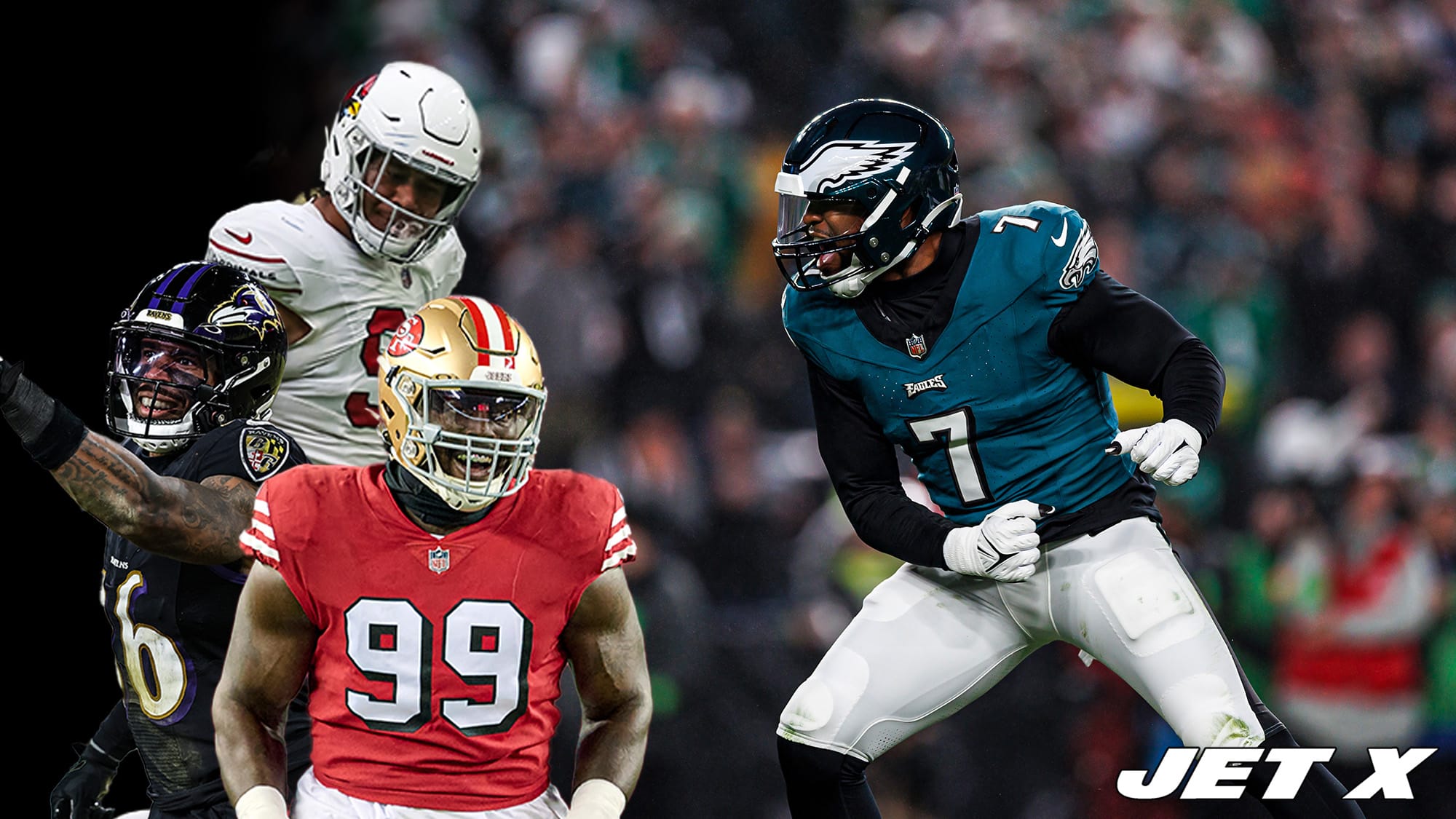Figuring out whether preseason production correlates with regular-season production
The New York Jets and their fans enjoyed a positive preseason opener against the New York Giants. A bevy of players put forth positive individual performances.
Taking a look back at the many promising statistics from the game had me wondering – is there actually a correlation between preseason production and regular-season production?
To answer this question, I looked back to the 2019 preseason (considering there was no preseason in 2020). I took hundreds of qualified players and compared their preseason performance to their regular-season performance.
Offensively, I analyzed 433 players who played at least 50 offensive snaps in the preseason and went on to appear in at least one regular-season game.
Defensively, I analyzed 496 players who played at least 70 defensive snaps in the preseason and went on to appear in at least one regular-season game.
I grabbed each player’s overall Pro Football Focus grade from both the preseason and the regular season in order to get a glimpse of the overall correlation between preseason PFF grades and regular-season PFF grades.
These are the results, featuring the correlation coefficient (a measure of linear correlation between two sets of data) for all offensive players, all defensive players, and each position individually.
| Position | Correlation coefficient |
|---|---|
| All Defense | 0.110 |
| All Offense | 0.089 |
| T | 0.242 |
| QB | 0.199 |
| C | 0.185 |
| CB | 0.166 |
| LB | 0.123 |
| RB | 0.088 |
| S | 0.073 |
| G | 0.065 |
| IDL | 0.049 |
| WR | 0.044 |
| TE | 0.025 |
| EDGE | 0.019 |
Correlation coefficients range from -1.0 to 1.0. Here is a generally accepted guideline of what they tell us:
- –1.000 A perfect downhill (negative) linear relationship
- –0.700. A strong downhill (negative) linear relationship
- –0.500. A moderate downhill (negative) relationship
- –0.300. A weak downhill (negative) linear relationship
- 0.000: No linear relationship
- 0.300: A weak uphill (positive) linear relationship
- 0.500: A moderate uphill (positive) relationship
- 0.700: A strong uphill (positive) linear relationship
- 1.000: A perfect uphill (positive) linear relationship
While every position did have at least somewhat of a positive correlation between preseason grade and regular-season grade (meaning that their regular-season grades tended to improve as their preseason grades improved), the correlations were extremely weak across the board.
The most correlative position was offensive tackle with a correlation coefficient of 0.242 – and even that falls well below the threshold for what is typically considered a “weak” positive relationship.
Offensive players had a coefficient of 0.089 while defensive players were a tick higher at 0.110. Both numbers are too low for there to be a truly meaningful correlation between preseason PFF grades and regular-season PFF grades.
Get Started: Learn More About Becoming A Jet X Member
Compartmentalizing the data by looking at individual teams can showcase how erratic and meaningless the correlation between the preseason and the regular season is.
Look at the 2019 Jets defense, for example. There was actually a microscopic negative correlation (-0.010) between preseason PFF grades and regular season PFF grades for the 11 Jets defenders that played at least 70 preseason snaps.
That Jets defense gives us a few good examples of this weak correlative relationship in action.
Players like Henry Anderson, Blake Cashman, Frankie Luvu, Bronson Kaufusi, and Darryl Roberts were solid in the 2019 preseason before going on to perform poorly in the regular season.
On the other hand, starters such as Jamal Adams, Foley Fatukasi, Marcus Maye, and Brian Poole posted decent-to-good grades in the preseason before posting great-to-elite grades in the regular season.
Ultimately, the takeaway here is clear: a player’s production in the preseason essentially tells you nothing about how well they will perform in the regular season.
Thriving in the preseason does not significantly increase a player’s chances of thriving in the regular season, and struggling in the preseason does not markedly increase a player’s chances of struggling in the regular season.












A correlation analysis on rookies and year 2 players might be more instructive. Veterans likely tend to be more relaxed or experimental in preseason.
That’s a good point. I do think that this study captured those players well, though, as the majority of the players in this sample are fringe guys. The starters’ handful of drives typically don’t get them enough snaps to hit the qualifier I used. It’s the 2nd and 3rd stringers playing full halves/three quarters of the game that rack up enough snaps to have at least a somewhat reasonable sample of snaps to analyze.
That’s a great point about the vets, though. It would be interesting to dice it up based on experience.